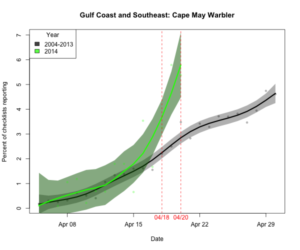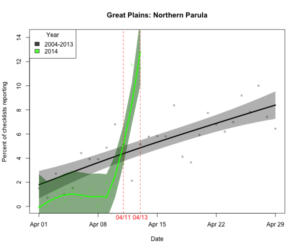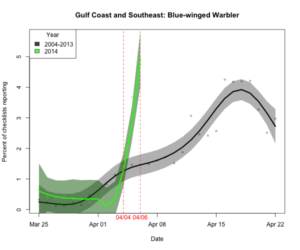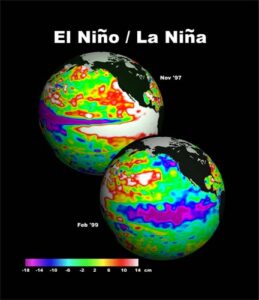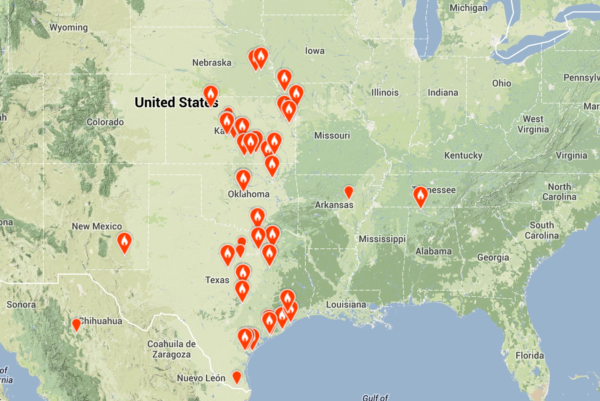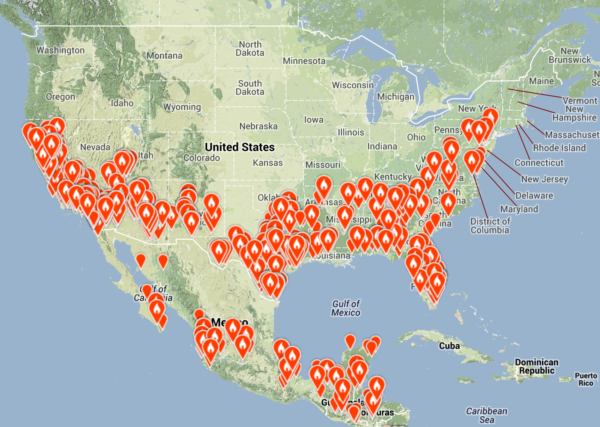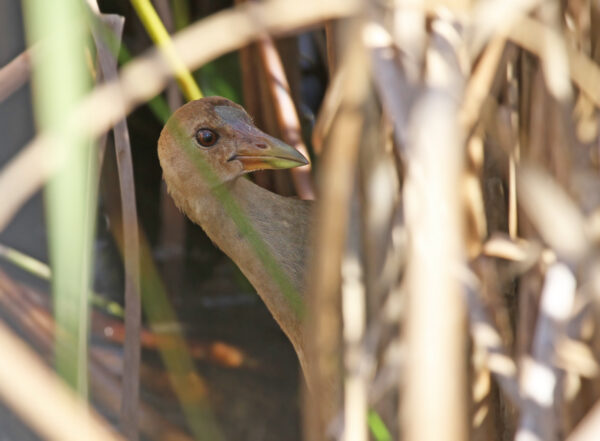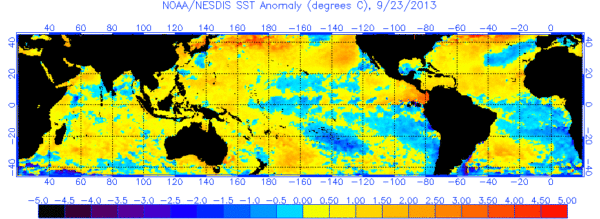News: Species on the Move
This week we highlight species on the move over the past weekend in the Southeastern US, including a number reported in frequencies substantially in advance of the 2004-2013 average (like Swainson’s and Wood Thrushes, Black-throated Blue and Cape May Warblers, Rose-breasted Grosbeak, and Scarlet Tanagers). Of course, not all species are moving in advance of the average […] Read more...
This week’s species on the move discussion highlights some advanced arrivals gleaned from this past weekend’s eBird reports. Northern Parula is being reported with greater frequency than the 10-year average for this date in the Great Plains and Upper Midwest and Northeast. This is particularly true in the Great Plains, where a huge spike in […] Read more...
Species on the move this week features birds that are catching up on their schedules, exploding on to the scene, and falling out. Eastern Phoebes finally began to arrive in large numbers in the Northeast, effectively erasing delays in arrivals experienced during previous weeks. Orchard Orioles are now appearing on checklists with frequencies more like […] Read more...
Here’s a brief review of some species that showed substantial changes in reporting on eBird this past weekend. Hooded Orioles have been on the move in the last week, appearing in slightly more reports than the last decade’s average. Bullock’s Oriole, however, seems to be right on track with the last ten years of reports. […] Read more...
2014 may be a year to remember for linking bird movements to patterns of sea surface temperature (SST) anomalies. Many along the Atlantic and Gulf Coasts will certainly remember the winter of 2012-2013 for, among other reasons, the crazy Razorbill invasion in the southeastern US and Florida, and even into the Gulf of Mexico and its […] Read more...
Here’s a brief recap of of some species that showed substantial changes in reporting on eBird this past weekend. From the Great Lakes and Northeast region, several species took advantage of favorable conditions, especially in the early part of the weekend. Tree Swallows, Eastern Phoebe, Blue-winged Teal, and Osprey all made moves during this time. Interesting, […] Read more...
Once again, we’ll highlight some species that took advantage of the weekend to move. First, let’s check in with Red-necked Grebe again. Recall that at this time last week, this species was on the increase in the Upper Midwest and Northeast. We interpreted this peak as “numerous displaced and confused winter birds still finding many areas […] Read more...
In this new weekly (or almost weekly) feature Team BirdCast will be highlighting particular species that are departing, arriving, or just plain moving in very obvious (or not!) ways. Warbling Vireo: the eBird map below shows the most recent reports of this species, highlighting the first migrants appearing in southern California and Arizona. Red-necked Grebe: […] Read more...
Purple Gallinules are well known as champions of long-distance vagrancy, with records from as far north as Iceland, as far south as South Georgia Island, as far west as the Galapagos Islands, and as far east as Italy and South Africa (West and Hess 2002). This species, and many other rails, are habitat-based dispersalists, adapted […] Read more...
Birders along the Pacific Coast of the US, along with The Weather Channel and the Los Angeles Times, have certainly noticed the recent invasion of Blue-footed Boobies in California, whether you’ve read about it on eBird or seen it in person. Similar large-scale movements are occurring for other species along the Pacific Coast (for example, […] Read more...
With warm air prevailing across the region, sky watchers should plan to spend a little time looking for Swallow-tailed Kites. April is traditionally a good month to find a wandering individual or two of this southern species in locations far to the north of typical present-day breeding locations. This map shows April observations of the […] Read more...
As if this year did not already have enough displacement, entrainment, diversion, and irruption, along comes the Razorbill flight of 2012. Early December saw an unprecedented invasion of this species, which normally winters almost exclusively north of the mid-Atlantic states, into the waters off of Florida, with some individuals rounding Cape Sable and appearing in […] Read more...
Hurricane/Post-tropical Cyclone Sandy and all of her fury are firmly ensconced in the record books, and this storm will remain forever in the lexicon of Northeastern US weather lore (probably foremost ahead of the 1938 Long Island Express). This is certainly true from an ornithological perspective, with some avian effects from Sandy still apparent 11 days […] Read more...
Today through Friday has potential to see winds transport waterfowl, gulls, and other late migrants and irruptives into the Northeast and Great Lakes. Additionally, snow cover may force sparrows and open-area species like pipits, longspurs, Snow Buntings, and larks to move from areas where more than 1-2 inches covers the ground. Please make sure to […] Read more...
To follow yesterday’s post, get out a look for landbirds!!!! Something extremely interesting is occurring in the wake of the epic passage of Sandy. Recent reports from Maryland to Maine of a bizarre mix of Neotropical migrants, including Connecticut Warbler (MD), Yellow-billed Cuckoo and Scarlet Tanager (NY), and Eastern Wood-Pewee (MA), suggest that the effects […] Read more...

